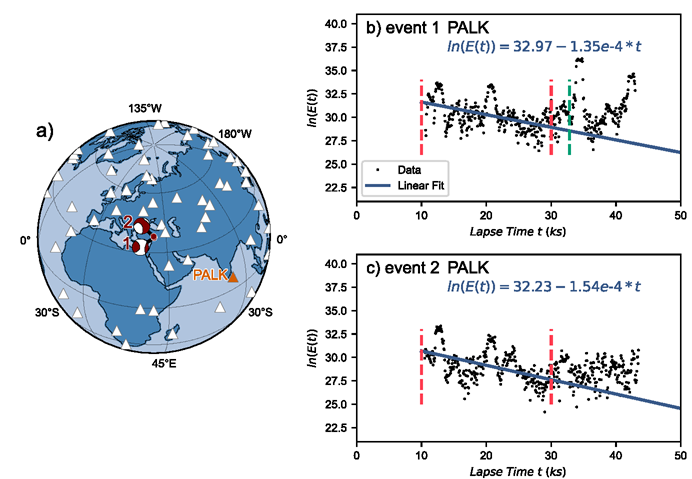The magnitude of the 2023 Turkish earthquake matches the largest in its history, a new study determined
Published 13 April, 2023
On February 6, 2023, two powerful earthquakes successively occurred in Turkey, resulting in significant damage and loss of life across southeast Turkey and northwest Syria. As a fundamental parameter, their magnitudes are of great interest to the scientific community and the general public at large.
Currently, reported magnitude results for the two events have significant discrepancies, and the difference in magnitude between them is highly uncertain (between 0.1 and 0.4), which requires further revisions.
Aiming to address that gap, a team of researchers led by Professor Xiaodong Song of Peking University used a novel and reliable long-period coda moment magnitude method to measure the magnitudes and relative sizes of the two events.
“The moment magnitudes obtained were 7.95 and 7.86, higher than the other published results," shared Prof Song, who is the corresponding of the paper. "The first mainshock was slightly stronger than the second with an estimated difference of 0.11. This corresponds to one of the largest tremors in over 2,000 years of Turkish history."
Furthermore, the researchers found that the two large earthquakes were rare large continental earthquake doublets—two or more large earthquakes occurring in close proximity and at short time intervals—as such events occasionally occur in subduction zones and rarely on the continent. The pair of earthquakes also appear to be the most powerful doublet ever to occur on land.
The team published their findings in the KeAi journal Earthquake Science.
"Our method specializes in measuring large earthquakes through their long-period energy tens of thousands of seconds post-quake," explained, Xinyu Jiang, lead author of the study and a doctoral student with the study team. "Its advantage lies in relative insensitivity of the coda wave to factors such as source location and Earth heterogeneities, allowing for more accurate and reliable assessments of moment magnitude."
The researchers fitted an effective energy decay model to estimate initial coda energy. The energy was calibrated with fast numerical simulation to extract earthquake size data by eliminating the influence of seismic source and wave propagation complexities.
"Our novel approach has the potential to advance both quake research and disaster response," concluded Prof Song.
Doctoral students Tian Li and Kaixin Wu were also involved in the study under Prof Song's supervision.
Image: Illustration of the seismic event, station distribution, and coda wave energy. CREDIT: THE AUTHORS

Contact author name, affiliation, email address:
Xiaodong Song
SinoProbe Laboratory, School of Earth and Space Sciences, Peking University, Beijing, 100871, China
Hebei Hongshan National Observatory on Thick Sediments and Seismic Hazards, Peking University, Beijing 100871, China
See the article: XinYu Jiang, XiaoDong Song, Tian Li and KaiXin Wu, Moment magnitudes of two large Turkish earthquakes on February 6, 2023 from long-period coda. Earthquake Science, Volumn 36, Issue 2, 2023, Page 169–174, https://doi.org/10.1016/j.eqs.2023.02.008